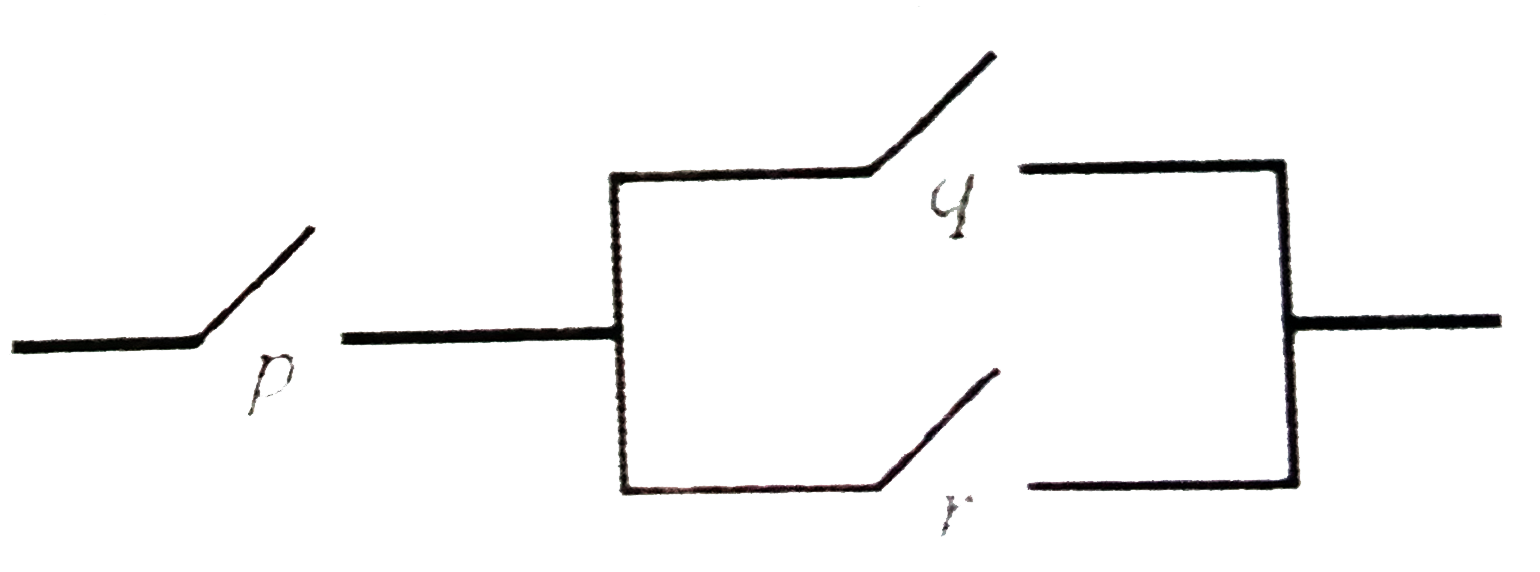The dual of p⇒q is:
⌉p∨q
p∨q
p∧q
⌉p∧q
The correct Answer is:D
To find the dual of the statement "P implies Q," we can follow these steps:
1. Understand the implication: The statement "P implies Q" can be rewritten in terms of logical operations. The implication can be expressed as:
P⟹Q≡¬P∨Q
This means "P implies Q" is equivalent to "not P or Q."
2. Identify the dual: The dual of a logical expression is obtained by swapping conjunctions (AND, ∧) with disjunctions (OR, ∨) and vice versa, while keeping negations (¬) unchanged.
3. Apply duality: Now, we apply the duality transformation to the expression ¬P∨Q:
- The disjunction (OR, ∨) becomes a conjunction (AND, ∧).
- Therefore, the dual of ¬P∨Q is:
¬P∧Q
4. Conclusion: Thus, the dual of "P implies Q" is:
¬P∧Q
Final Answer:
The dual of P⟹Q is ¬P∧Q.
---
P⟹Q≡¬P∨Q
This means "P implies Q" is equivalent to "not P or Q."
- The disjunction (OR, ∨) becomes a conjunction (AND, ∧).
- Therefore, the dual of ¬P∨Q is:
¬P∧Q
¬P∧Q
The dual of P⟹Q is ¬P∧Q.
Topper's Solved these Questions
- MATHEMATICAL REASONINGBook:ML KHANNAChapter:MATHEMATICAL REASONINGExercise:PROBLEM SET (1)(FILL IN THE BLANKS)
Explore 22 Videos
- MATHEMATICAL REASONINGBook:ML KHANNAChapter:MATHEMATICAL REASONINGExercise:PROBLEM SET (1)(TRUE OR FALSE)
Explore 21 Videos
- MATHEMATICAL REASONINGBook:ML KHANNAChapter:MATHEMATICAL REASONINGExercise:PROBLEM SET (2) ASSERTION/REASON
Explore 3 Videos
- LOGARITHMS AND SURDSBook:ML KHANNAChapter:LOGARITHMS AND SURDSExercise:Miscellaneous exercise
Explore 3 Videos
- MATRICESBook:ML KHANNAChapter:MATRICESExercise:COMPREHENSION
Explore 3 Videos
Similar Questions
Knowledge Check
(p⇒q)∨p is:
Ap⇒qBqCp∨qDp∧qThe negation of p⇒q is:
Ap∧⌉qBp⇒qCq⇒pDp∨⌉qThe contrapositive of p⇒q is:
A⌉q⇒⌉pB⌉p⇒⌉qCq⇒pDp⇒q
Write 'T' for True and 'F' for False.
⌉(p⇒q)∨r is a dual of ⌉(p⇒q)∧r.
View SolutionThe converse of p⇒q is .......
View SolutionState whether the given statements are true or false
p⇒q is false when p and q have different truth values
View SolutionIf p is true and q is false, then p⇒q is:
View SolutionThe inverse of p⇒⌉q is :
View Solution


 is:
is: